Welcome to La Rioja !!!
Upon arrival in the city, you will pick up your car and drive to the hotel for check-in and accommodation.
The urban planning of La Rioja city is a conjunction of antiquity and modernity. Narrow streets, low houses, museums, historical monuments, churches and convents, contrast with the dynamic commercial center, offering an excellent alternative for cultural tourism.
Evening is at your leisure and to get ready for a unique experience!



* Pick up car rental.
LA RIOJA-LAS PEÑAS-ANILLACO-AIMOGASTA- SAN BLAS DE LOS SAUCES "La Rioja coast line"
182 km - 3 hour drive - Road # 75 paved - in good condition
La Rioja coast line is the name given to the string of villages that stretch out at the foot of the Velasco mountains, part of a mountain range where fertility reveals itself in its olive groves, vineyards, fruit trees and walnut tree plantations.
Route 75, known as “El Camino de La Quebrada” (Gorge Road), winds its way out of the capital until it joins one of the many roads carved out by the Incas. After crossing the Huaco River, which roams among slopes covered with cactus, is the town of Sanagasta. Before you arrive, make a stop at the Los Sauces dam. The area, at 1,400 meters above sea level, is a fantastic viewpoint that showcases the geological formations "The Three Camels" and "Gypsy Skirt" among the reddish hills.
About 16 kilometers away, at the entrance to the Sanagasta department, all attention is drawn towards the "Indian Virgin" - not recognized by the Catholic Church although it gathers an annual procession – which apparently arrived in the area during the seventeenth century from Peru with the Incas who traveled the Capac Ñan (Inca Trail, which reached Tucumán from Cusco). The image is at the side of the road on the way to the Red Valley. The area has been declared a "geological park" since sediments carrying dinosaur eggs and nests, as well as fossil plants from the Cretaceous period have been found there. We suggest visiting Finca Lomas Blancas for lunch and a chance to taste their wines. http://www.fincalomasblancas.com/es/
In El Huaco, you cannot miss a visit to the Finca Vista Larga https://vistalarga.com.ar/ producer of wines, olive oil and nuts.
Las Peñas is a quiet little town made up of a handful of houses built on huge granite rocks. Its greatest relics are the ovens that were used at the beginning of the 20th century for the production of lime, an activity on which its economy was based and which has since been abandoned.
In Agua Blanca, find Finca El Huayco owned by Michel Belin, a Frenchman who settled in these lands several years ago. Perhaps because he finds it an exotic flavor, goat's milk jam is his star product, although he also makes other delicatessens such as candied walnuts and goat milk cheese.
The route continues in Pinchas, overflowing with walnut trees, fruit trees, vineyards and vegetable gardens. The locals live off their own crops. Wines, honey, jams and nuts in different preparations become precious souvenirs every time a tourist arrives. The weaver Doña Frescura´s house is an unavoidable visit in this town: her indigenous ancestors inspire her creation of colorful tapestries in which she captures northern landscapes and rock art motifs, as well as making fine basketry and llama and vicuña wool blankets.
The intense aroma of the vineyards indicates that you have arrived in Anillaco, where the prestigious San Huberto winery is well worth a visit. It produces Chardonnay, Chenín, Torrontés, Malbec, Cabernet Sauvignon, Barbera, Merlot and Syrah wines. Other establishments in the coastal area produce traditional sweet or cooked patero wines, as well as varieties of sparkling wines, which can be found in regional stores.
You will continue on Route 75 visiting many fascinating sites such as "El Señor de la Peña", a solitary 10 m reddish rock located east of the Sierra de Velasco and turned pilgrimage center.
You will arrive at Aimogasta, "National Capital of the Olive Tree" were you can taste the famous Arauco olive variety and its gourmet derivatives. We recommend visiting the Hilal Farm, which maintains ancestral production techniques with stone mills http://www.hilalhnos.com/larioja.html and getting up close to the famous "Quadricentennial Olive Tree".
From Aimogasta you will continue on Route 60 to the north. Along this road experience a radical change in the scenery, everything turns green due to the course of the Los Sauces River. You will then take Route 40 to your left in the direction of San Blas de los Sauces, your next destination.



* Breakfast at your hotel
SAN BLAS DE LOS SAUCES - CHAÑARMULLO - AICUÑA "Ideal for wine lovers"
62 km - 1 hour drive - Route # 40 - paved in good conditions
Breakfast at your hotel. A few meters away from Entre Viñedos Hotel a trail, strewn with fruit trees and vegetables gardens, ends at the Pucará de Hualco (Hualco Fortress), the ruins of a city that emerged around the year 1000 AD. Silence accompanies the ascending path, which tells the story of the ancient inhabitants of those remnants of stone, protected by towering cacti. Remains of round and square constructions, corrals and a ceremonial center are just a few sections of that immense metropolis that was one of the administrative centers of the Inca Trail. It was inhabited by the Aguada culture between 700 and 1000 AD, but different elements show remains of a local culture, distant even from that of Sanagasta. Doubts can be dispelled in the Interpretation Center, where vessels, arrowheads and funeral urns are exhibited.
After visiting the archaeological site, we suggest a drive to Chañarmullo - a town were ancient cultures are still present- and a visit to the winery of the same name, with its spectacular Malbec, Cabernet Sauvignon, Cabernet Franc and Chardonnay wines. https://chanarmuyo.com/chanarmuyo /store/.
We suggest having lunch there while enjoying the surroundings, before returning to the hotel for a well-deserved rest.



Breakfast at your hotel
SAN BLAS DE LOS SAUCES - LONDRES - TINOGASTA "Visiting archaeological sites"
225kms - 2 h 45 min drive - Route # 60 and Route # 40 - paved in good conditions
After breakfast, drive north along the mythical Route 40 heading on to Londres, the first city founded by the Spanish in the current provincial territory and the second Argentine city, founded after Santiago del Estero. Isolated houses between farms of fruit trees adorn Londres, known as the 'Cradle of the Nut', this town has two urban centers, each with a square and a church. Its dense history comes from the Diaguita tribes that sheltered in the neighboring stream of Shincal. This was one of the first areas of Argentina explored by the Spanish conquering expedition from Cusco. 11 kms SW of Londres you must visit the imposing “Shincal de Quimivil” an archaeological site conformed by pre-Columbian ruins of such importance that they have been declared national historical monument. El Shincal de Quimivil was an ancient city built and administered by the Incas around the fifteenth century that functioned as capital of the southern area of the empire. It was part of the Inca Trail, a network of thousands of kilometres of communication that interconnected the different territories and cities belonging to the vast domains of that civilization. Out of El Shincal de Quimivil return to Route 40 and take a right. Continue on Route 40 to the junction with Route 60. Turn right and drive along Route 60 to your final destination: Tinogasta



* Breakfast at your hotel.
TINOGASTA - FIAMBALA - SAUJIL - MEDANITOS - TATON
65 kms - 1 hour drive - Route # 60 (paved) + Road # 34 unpaved in good conditions
Breakfast at your hotel. Ask for your sandboard and pool towel at the hotel reception and venture into an unforgettable journey! You will travel the ADOBE ROUTE, you will slide through the highest dunes in the country and end your day with a relaxing bath in the Fiambalá Hot Springs.
Tinogasta is a village of Diaguita origin. In the Kakana language, "tino" means "meeting" and "gasta", "town", thus forming "town meeting". Surrounded by extensive vineyards, olive groves, farms and alfalfa groves that are the mainstay of the regional economy, the surroundings offer several boutique wineries that produce excellent quality wines, in many cases exported and worthy of gold medals in various countries. The best varietals are Syrah, Malbec and Cabernet.
Tinogasta offers the most varied possibilities for adventure tourism, photographic safaris or relaxation in the mountains. Trekking, horseback riding, rappelling, sandboarding, mining tourism and fly casting (rainbow trout at more than 3,400 meters above sea level) are some of the options.
The Adobe Route is a journey of almost 50 kilometers on Route 60 that passes through small towns older than 300 years that seem to have been forsaken by God. From old houses to countless churches and stores all are built with the same material and the same technique: adobe.
The adobe churches are the constructions that most attract the visitor's attention. Their rounded domes, their shapes and lines, their arches and above all their color, terracotta brown, make them unique.
The route begins in Tinogasta, more precisely in the Casa Grande adobe hotel, a few meters from the main square of the city. A 17 minute drive north along National Route 60 will take you to El Puesto, where you will visit the Orquera Oratory, built at the beginning of the 18th century with curved carob beams and a circular bell tower of a unique plasticity and architectural design.
In La Falda, the Andacollo church restored in 2004 retains its neoclassical lines, with carved cement and lime moldings. You can also visit the Mayorazgo de Anillaco Provincial Historical Monument, where you can discover the influences of the Andalusian estancias of the 18th century, and the Nuestra Señora del Rosario Church,the oldest in Catamarca, with a dirt floor, adobe walls and a cane and clay roof, built in 1712 and treasuring its original altarpiece.
In Fiambalá, last town of the Adobe Route, you should visit the Church of San Pedro, La Comandancia de Armas and the modern Don Diego winery, also built in adobe in recent years.
In Fiambala you will take Route 34 to Saujil (16kms). An extensive sea of dunes, a majestic landscape that shelters the highest dune in the world (1234m), called Federico Kirbus, located in the town of Tatón at 2845 meters above sea level. The endless white sand dunes of Medanitos and the Magic Dune in Saujil also stand out. This area is recognized worldwide as it was the epicenter of several stages of the mythical international Dakar Rally.
On the way back to Tinogasta, a stop at the Fiambalá hot springs is a must to end a perfect day. A chain of natural pools that descend from the mountain, where the water temperature goes from 38º C to 70º C and their mineral properties make them highly recommended for their healing and medicinal power. Take your time to relax and enjoy before you return to the hotel.



Breakfast at your hotel.
TINOGASTA - CAMPANAS - FAMATINA - CHILECITO
142 km - 2 h 15m drive - Route # 11 paved in good conditions
Breakfast at the hotel. Today you will head south along a beautiful path bordering the Cordón de Famatina at 6250 m above sea level and passing through towns such as Campanas, Carrizal, Famatina, all dedicated to agricultural production, mainly walnuts and olive trees. You will arrive in Chilecito, where I suggest you visit the winery of the Cooperativa Vitivinifrutícola de La Rioja Ltda. to learn about the virtues of these valleys and its excellent wine production. After checking-in at the Posada del Olivo, we suggest visiting La Puerta Winery, 15 km to the south along Route 74, producers of premium quality olive oil and wines.
La Puerta customer service at the wine shop:
Monday to Friday from 8:30 a.m. to 5:30 p.m.
Saturday, long weekend and holidays from 9:30 a.m. to 5:30 p.m.
Visiting hours to the farm and winery:
Monday to Friday at 9:00 a.m., 11:00 a.m., 2:00 p.m. and 4:00 p.m. with reservation.
Saturday, long weekend and holidays at 10:00, 12:00, 14:00 and 16:00 with reservation.
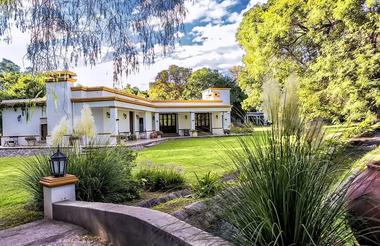
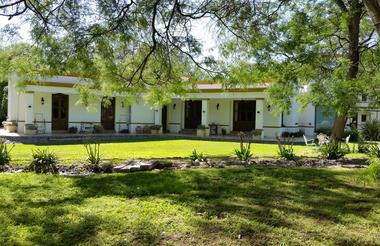
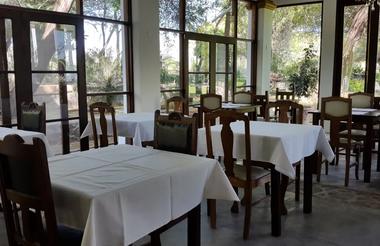
Breakfast at your hotel.
Breakfast at your hotel.
Today is at your leisure to relax and enjoy the Posada. We suggest visiting La Mexicana Mine, a gold mine located on Cerro Famatina at 4600 meters above sea level. Just half an hour from the city of Chilecito, along a gravel road you access the town of Santa Florentina, where very good quality wines are produced. From there you drive up to Station No. 1 of the Cable lane. A pharaonic feat of engineering and declared a National Historic Monument in 1982. Guided tours can be taken and there is a restaurant offering regional meals (check before if working). The views from Station 1 are incredible, it is a must for anyone visiting Chilecito and its surroundings.
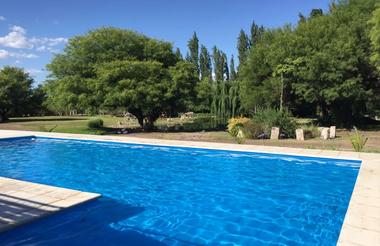
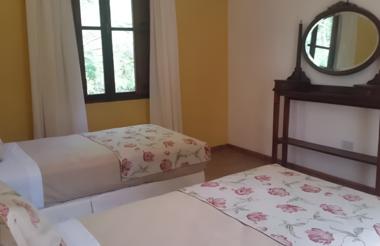
Desayuno en el hotel.
NONOGASTA - CUESTA DE MIRANDA - TALAMPAYA NATIONAL PARK - EL CHIFLON
197 km - 2 h 20 min drive - Route # 40 to Los Tambillos, Route # 18 to Pagancillos, Route # 76 to Talampaya and finally Route # 150 to Hotel Posta Pueblo El Chiflon.
Breakfast at your hotel. Check-out and departure from Nonogasta towards Cuesta de Miranda, a cornice path flanked by deep valleys and gorges that leads to colossal red-hot walls.
The immensity of the Famatina hill, with its eternal snows, will be the silent witness of your passage through the place. The contrast of the white of its snowy peaks with the blue of the sky and the green of the other mountains forms a perfect postcard to keep amongst your memories. You will make several stops for photographs at the different panoramic points. Driving down the slope, in the town of Los Tambillos you will take Route 18 to the left to the town of Pagancillos, where you will turn left again to take Route 76 to the Talampaya National Park, a geological treasure that can be traveled on excursion vehicles, bicycles or simply walking.
At the entrance, in addition to a craft fair and a restaurant with their respective toilets, there are offices where you can decide for any of the different excursion options.
The Talampaya National Park occupies an area of approximately 215 thousand hectares in the south of the province of La Rioja and shows the traces of what life was like in this place millions of years ago. Its reddish and brown colors manage to transport us to another world in which dinosaurs and other extinct species once reigned. Visitors come year after year to appreciate the reddish walls of more than 150 meters high, its condors that nest on the peaks and the curious forms carved in the mountains by erosion, among which The Monk or the Rook stand out, in addition to others such as the Sentinel, the Holy King on the camel and the Chess Board.
Wind and rain erosion have carved these mountains creating natural "sculptures" that will disappear with the passage of time while forming others that man´s imagination will surely baptize. After visiting the park, you will continue along Route 76 until joining Route 150 on your left, to reach your destination: Posta Pueblo El Chiflon. Check-in and accommodation.



Breakfast at your hotel.
EL CHIFLON- ISCHIGUALASTO - EL CHIFLON
67 km - 50 min drive - Route # 150 paved and in good conditions.
Breakfast at your hotel. Today you will visit the Ischigualasto Provincial Park, better known as Valle de la Luna. In this part of the planet, over millennia, the wind has done its work and left its trail so that today we can contemplate an amazingly different geography. You will enter the Park in your own vehicle. Once you arrive at the park you must pay the entrance fee and queue up, waiting for the next guided departure. The tour of the park takes a few hours and the local guide will mark the meeting points at the different stops to appreciate the geological wonders of the park. There is an interpretation center, snack bar and toilets almost at the end of the route.
Return to the hotel to rest and pack.

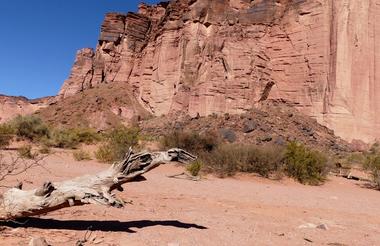
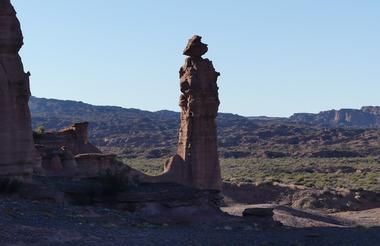
Breakfast at your hotel.
EL CHIFLON POSTA PUEBLO - LA RIOJA
150km - 1 h 50 min drive - Route # 150 to Patquia & Route # 38 to La Rioja City - paved road in good conditions.
Breakfast at your hotel. Check-out and departure to the city of La Rioja, where you must leave your rental car and take your flight back home.
Among vineyards and olive groves, you will take with you beautiful memories of this little explored area of our beautiful country.
Come back soon!!
* Breakfast at your hotel




